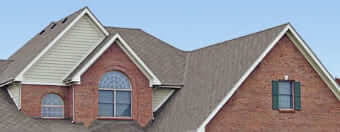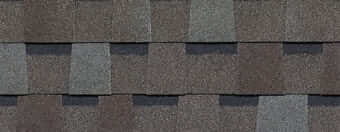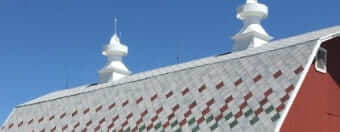from Sherriff Goslin Roofing
Choose your view:
Roofing Maintenance Tips to Prevent Sun Damage & Costly Repairs
The sun plays a major role in the aging and deterioration of your roof, especially if regular roofing maintenance and inspections are overlooked. While storms and debris often get the spotlight, UV roof damage and prolonged heat exposure are just as destructive over time. If left unaddressed, these slow-burning issues can lead to expensive roofing repairs, especially in hotter climates.
In this blog, we’ll explain how the sun affects your roofing materials, signs of damage you should watch for, and how proper care, including seasonal roof maintenance, can extend the life of your roof.
What Is Sun Damage & Why Does It Matter?
Sun damage refers to the wear and tear from constant exposure to ultraviolet (UV) rays and heat. Roofs are exposed to sunlight daily, which may not seem harmful initially. But these conditions dry out roofing materials over time, break down protective coatings, and cause warping, fading, or cracking.
When ignored, roof heat damage reduces curb appeal and compromises the structural integrity of the roofing system. That means more frequent roofing repairs, shorter lifespans for shingles or tiles, and potentially major leaks or insulation problems.
How UV Rays Damage Roofing Materials
UV rays are a form of electromagnetic radiation. While they can’t be seen, they significantly damage surfaces they contact, especially when exposed for hours a day over years. Just like your skin can burn and peel from too much sun, your roof’s surface breaks down when constantly exposed to UV radiation.
Here’s how UV roof damage affects different roofing materials:
- Asphalt Shingles: These are especially vulnerable. UV rays dry out the oils in the asphalt, causing asphalt shingle deterioration. You may notice curling edges, cracking, or the loss of granules over time.
- Flat Roofs or Membrane Roofs: Sunlight breaks down membranes, leading to blistering and surface degradation. Once the surface becomes brittle, leaks become much more likely.
- Wood Shakes or Shingles: These can dry out and splinter, leading to rot or pest infestations if water gets in afterward.
The Role of Heat in Roof Damage
It’s not just sunlight—it’s the heat that comes with it. Your roof surface can easily reach temperatures of 150°F or more on a hot summer day. That kind of thermal stress causes expansion and contraction in roofing materials. Over time, this repeated movement leads to cracking, separation between seams, and even broken flashing.
Combined with UV damage, this heat accelerates the breakdown process and increases the likelihood of needing major roofing repair.
Common Signs of Sun-Related Roof Damage
Knowing the early signs of sun damage can help you take action before minor issues become expensive ones. During a routine roofing inspection, look out for:
- Cracked, curled, or missing shingles
- Faded or patchy areas on your roof surface
- Loose granules in gutters or downspouts (a sign of asphalt shingle deterioration)
- Warping or separation around vents, chimneys, or flashing
- Uneven roof surface or bubbling in flat roof membranes
If you notice any of these issues, it’s time to schedule professional roofing maintenance or an inspection.
How to Prevent Sun Damage With Roofing Maintenance
Seasonal roof maintenance is one of the most effective ways to protect your home from sun damage. Spring and fall inspections allow professionals to catch UV deterioration early, seal or replace damaged shingles, clear debris, and apply protective coatings when needed. Regular upkeep helps prevent costly repairs and can significantly extend the life of your roof.
Homeowners can also take simple steps to reduce sun-related wear. Installing reflective materials, ensuring proper attic ventilation, trimming nearby trees, and replacing aging shingles all help limit heat and UV exposure. A small investment in prevention now can save you major repair costs later.
Consider a Cool Roof
A cool roof is a smart upgrade if you're looking for long-term protection against sun damage. Designed with reflective materials, cool roofs help reduce surface temperatures and minimize heat absorption, especially during hot summer months. Whether replacing an old roof or planning future upgrades, a cool roof can offer significant advantages.
Benefits of a cool roof include:
- Lower roof surface temperatures to reduce heat-related deterioration
- Improved indoor comfort without over-relying on air conditioning
- Reduced energy bills due to less strain on cooling systems
- Extended roof lifespan by minimizing UV and thermal stress
- Eco-friendly performance that supports sustainable home design
Cool roofing materials are available in asphalt shingles, metal, tile, and membrane systems, so you don’t have to sacrifice style for performance.
Don’t Ignore Sun Damage—Schedule Roofing Repairs With Sherriff Goslin Roofing
Sun damage doesn't happen overnight, but once it shows up, it means your roof has already been under stress for years. Faded shingles, curling edges, or granule loss may seem cosmetic, but they’re early warnings of deeper deterioration. Left unchecked, UV roof damage and roof heat damage can lead to leaks, energy loss, and expensive repairs.
Sherriff Goslin Roofing provides trusted roof repair and roof replacement services throughout Michigan, Indiana, Ohio, and Florida. Our team identifies sun-related wear during roof inspections and provides durable, cost-effective solutions to extend your roof’s life.
Request a Roof Inspection or Estimate Today
Think your roof is showing signs of asphalt shingle deterioration or heat stress? We’re here to help. Our experienced professionals assess sun damage, recommend the right repairs, and offer personalized maintenance plans to keep your roof in top shape. We also provide financing options to fit your budget and timeline.
Contact us to schedule your free estimate or inspection.






